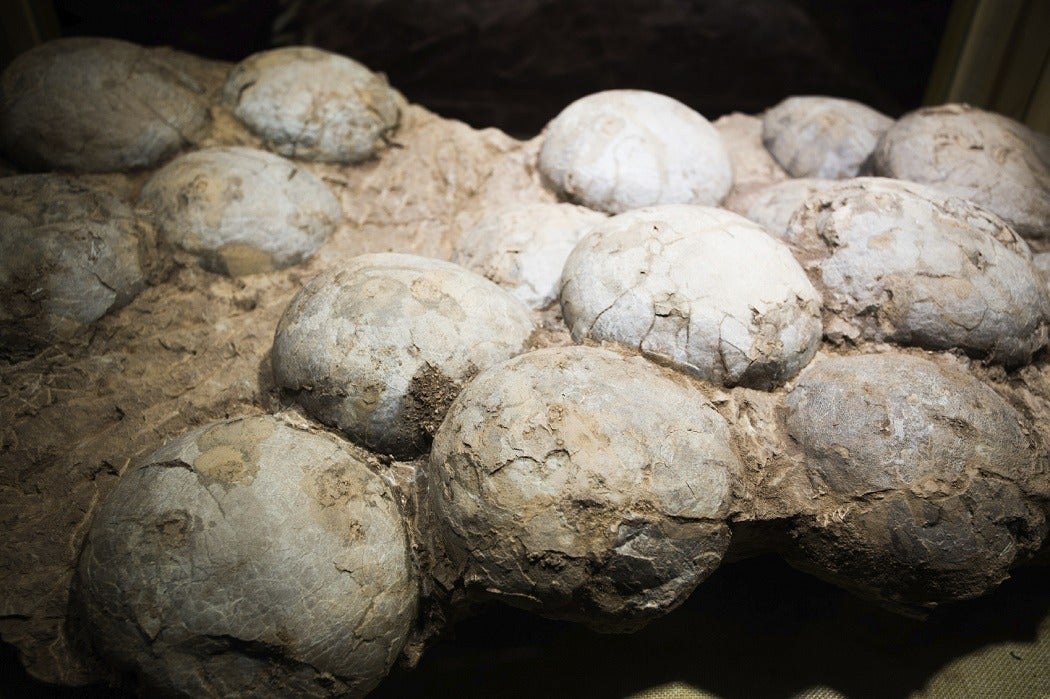What color were dinosaur eggs? At least some of them were blue-green, according to new research.
Paleontologists working with fossilized eggs from a dinosaur called an Oviraptor, found that the eggs contain a mix of blue-green pigments. Unsurprisingly, the experimentally-stained eggs were probably not as bright as they were before fossilization. This is the first evidence that dinosaur eggs might have had some of the same colors as modern birds, which are dinosaurs’ closest living relatives.
Without any fresh dinosaur eggs, the best place to examine egg coloration is in birds. Sometimes an egg color scheme has an obvious reason. The sandy coloration of many shorebird eggs, for example, is clearly meant as camouflage. However, some birds, such as robins, have vivid colors that would barely provide camouflage in a Picasso gallery. The reason is advertising; these beautiful eggs apparently indicate health and potential reproductive success of the female, causing parent birds to shower more attention and effort on the offspring.
In a 2011 experiment, researchers transplanted eggs with artificially enhanced blue color into the nests of non-parent robins. The “foster father” robins provided more food for the hatchlings from the extra-colorful eggs compared to those from regular or artificially dulled eggs. The effect faded a few days after hatching, for unclear reasons. Alternatively, many birds have a range of egg coloration even within a single clutch.
In northwestern crows, one egg is often pale compared to the others, and careful observation determined that this egg was most often the last egg laid. The first egg laid was the pale one most of the rest of the time. Predators, in turn, most often ate the last egg successfully. As it turns out, the last egg to be laid as a lower rate of successfully hatching than the more robust eggs in the middle order of the clutch.
It’s an elegant solution—crow evolution has adjusted to the fact that it’s impossible to guard every egg by offering up an egg that probably won’t hatch as a sacrifice. Abraham would be impressed.
The sacrificial egg does provide evidence that egg color can be tied to egg quality, and the bolder the color, the better the egg. Whether this was also the case in dinosaurs is unknown.
One problem with linking modern bird eggs directly to dinosaurs is that nobody knows exactly what dinosaur vision was like—dinosaurs might not have perceived blue-green the same way a robin does, so it might not have meant exactly the same thing. Dinosaur eggs may even have been completely different depending on their perception of color. The truth might never be known, but it’s fun to speculate!







